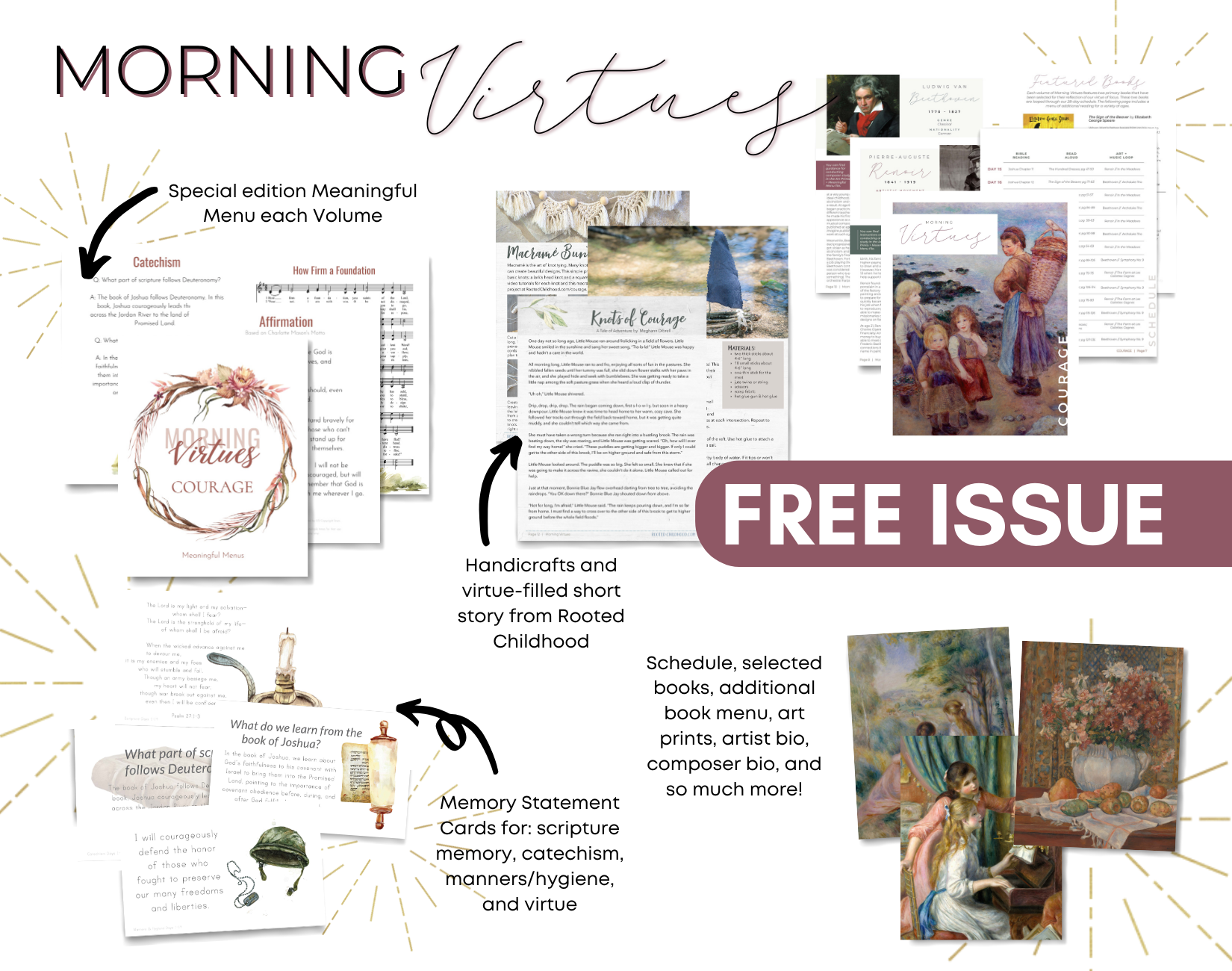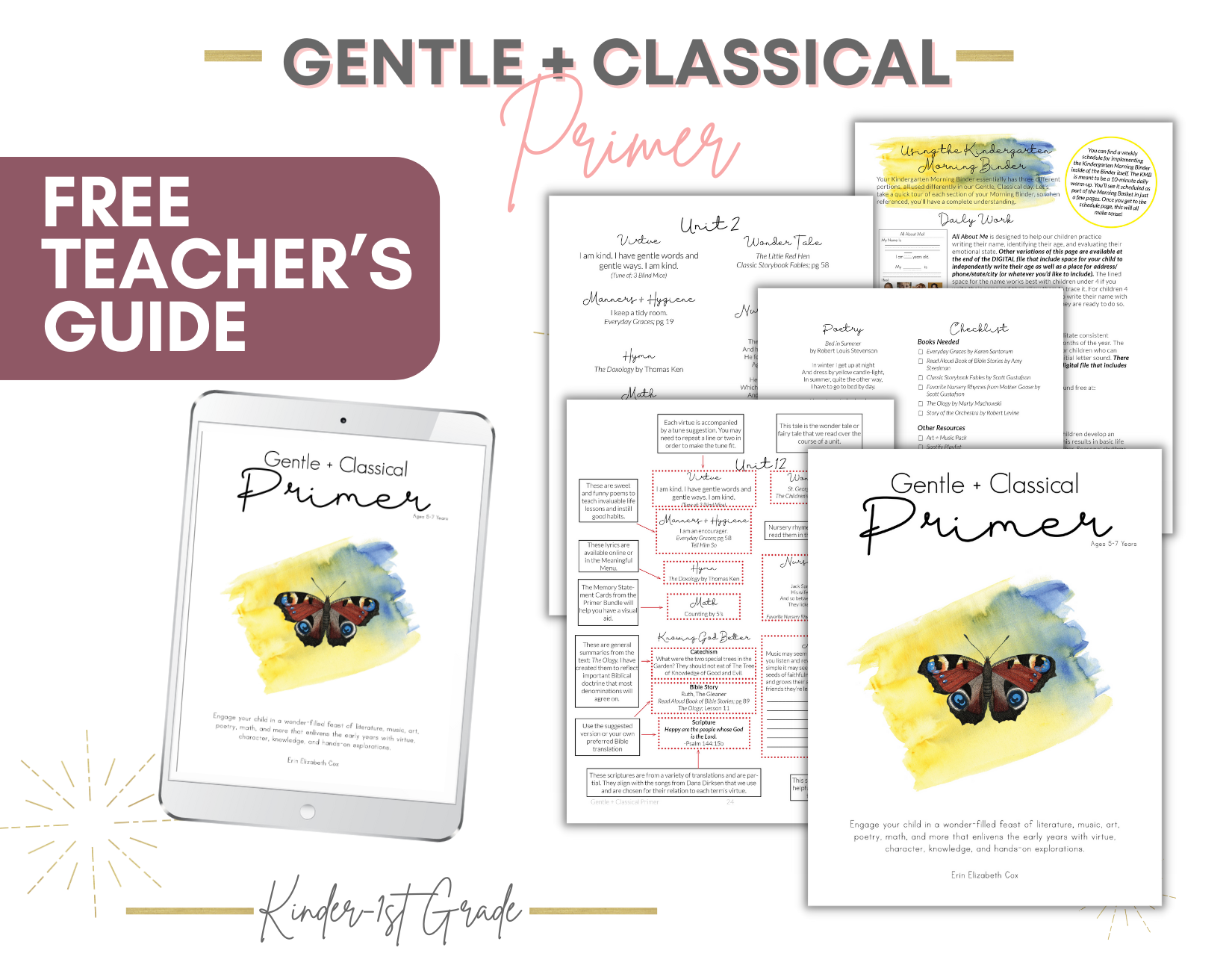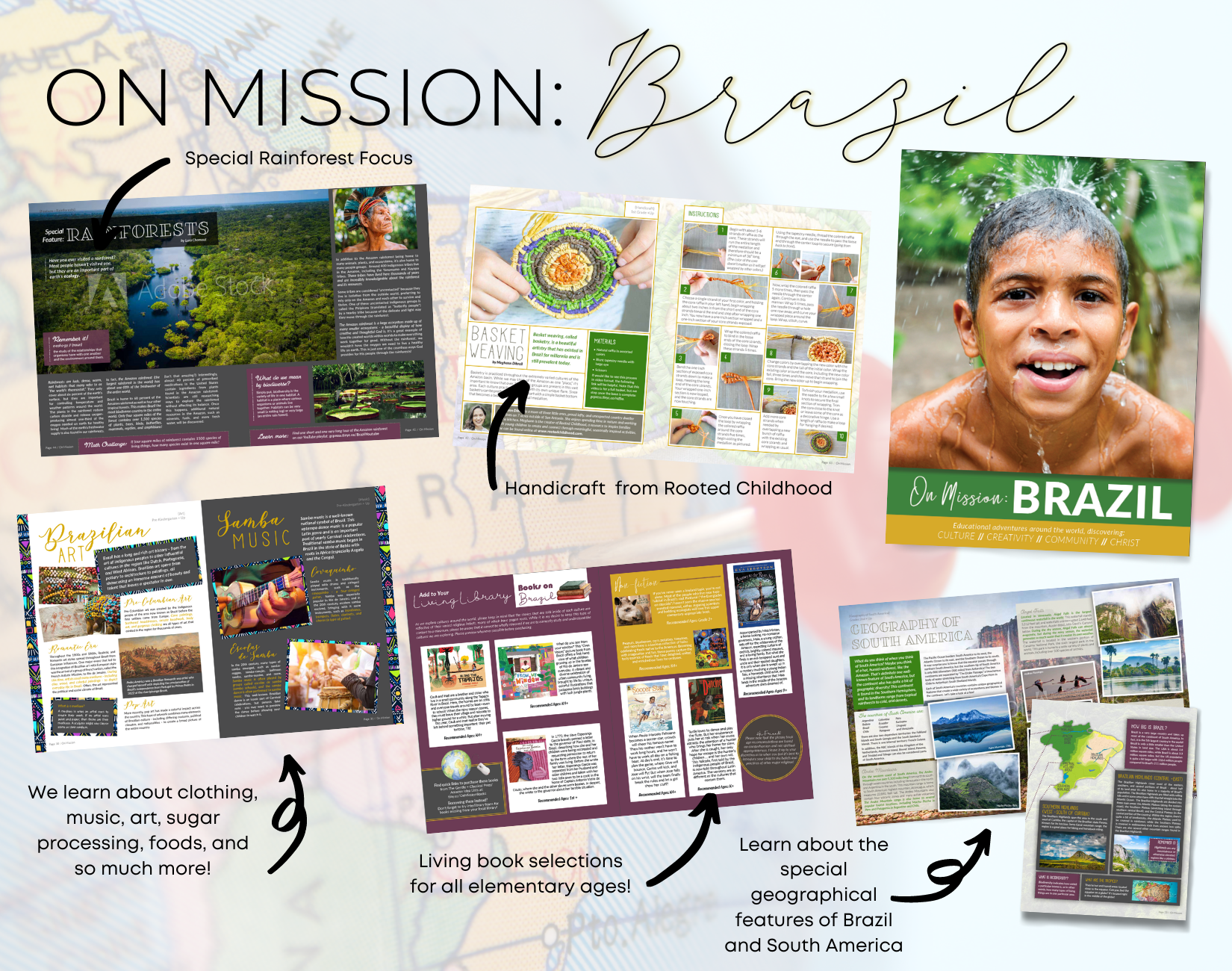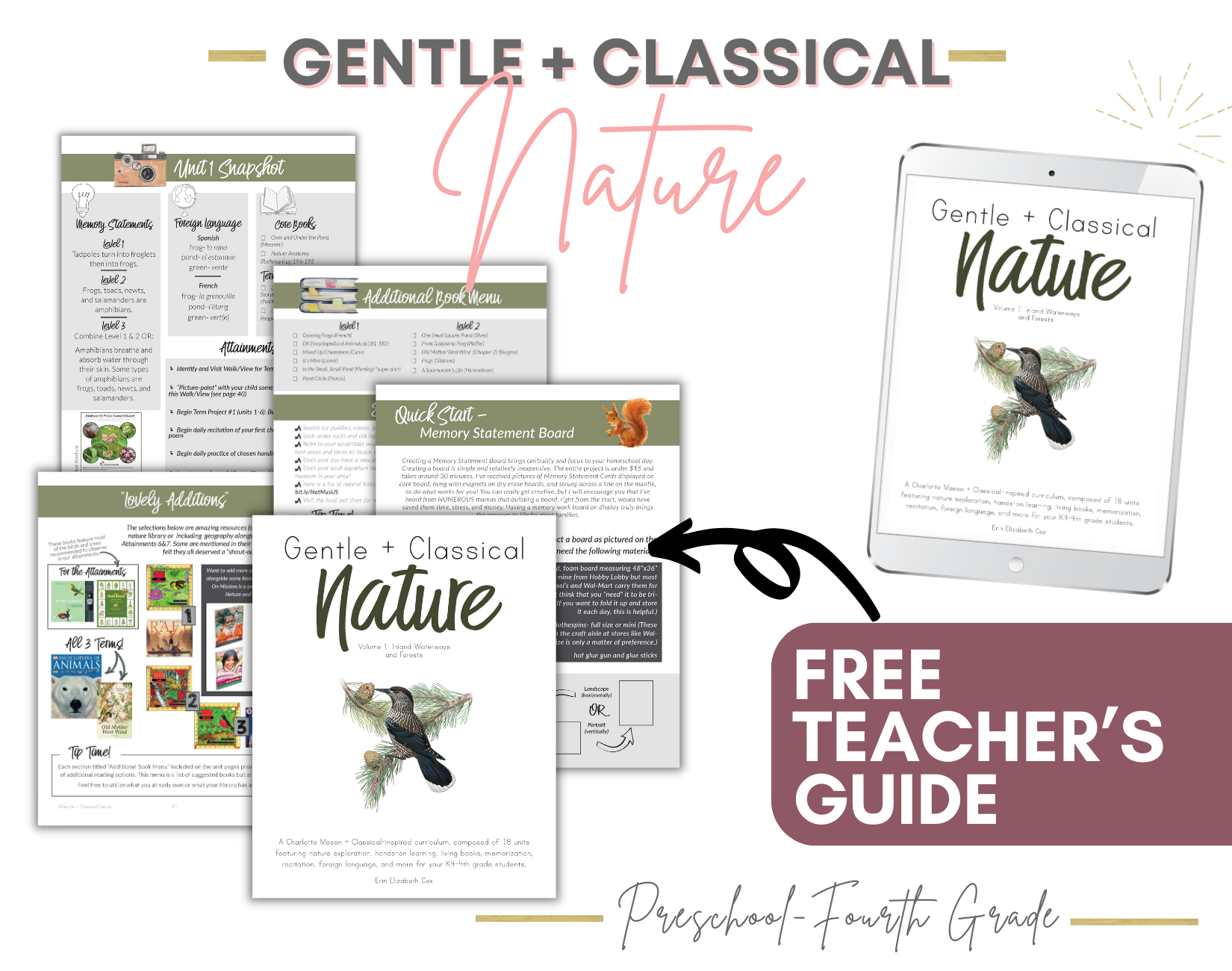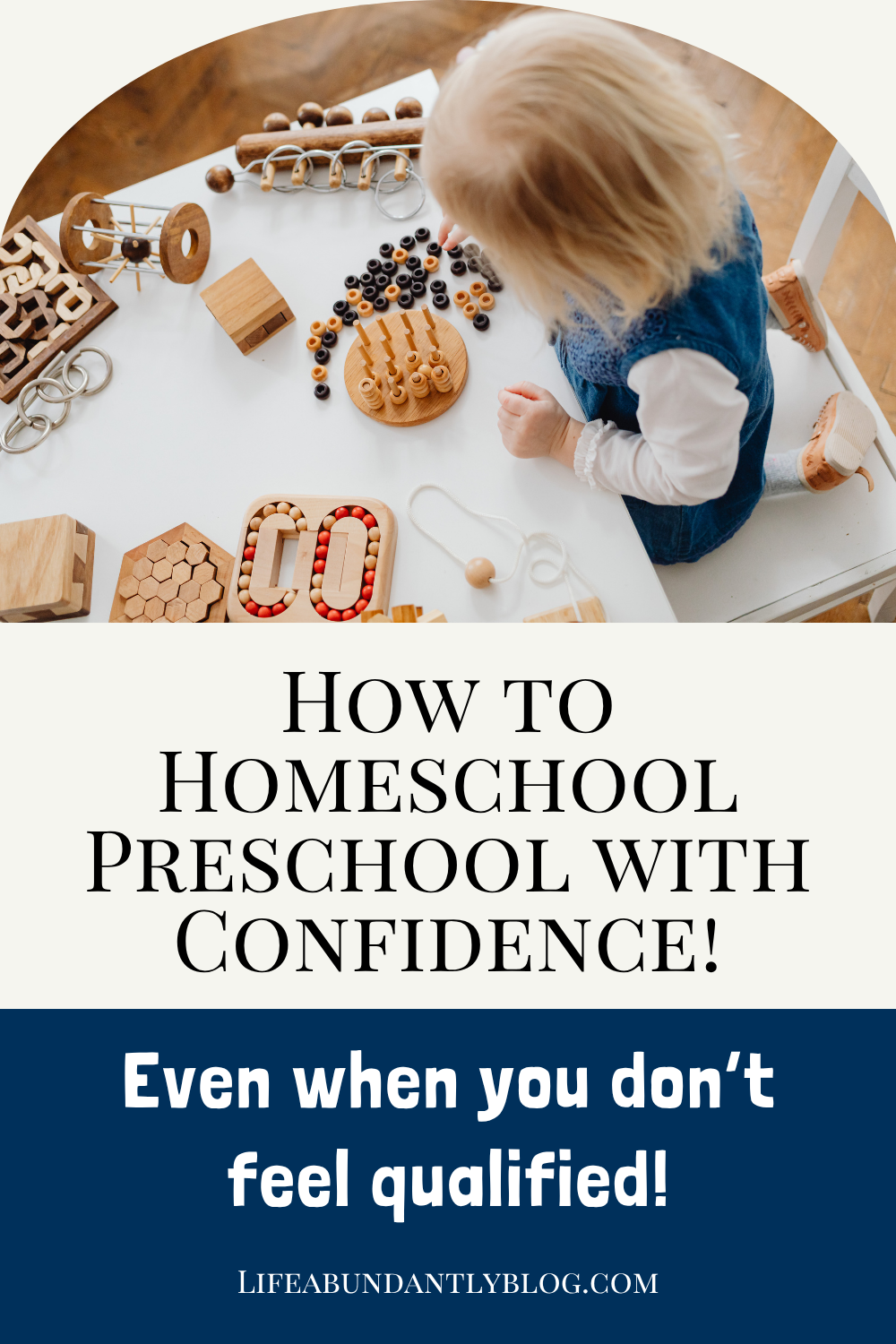How to Begin Homeschooling Preschool with Confidence (Even if You Feel Unqualified!)
/When most people picture “homeschooling preschool,” they imagine a tidy table, a child quietly and obediently tracing letters, and a mother who never loses her patience—or her coffee. Real life is rarely that polished.
Preschool at home is your 2-4 year old climbing you while you read, the breakfast dishes still in the sink, and a lesson that lasts as long as their attention span—which is to say, not long. And yet, that’s exactly where real learning happens: in the rhythm of ordinary days.
Confidence in these years doesn’t come from lesson plans or laminators. It grows when you begin to understand what preschool is for.
Preschool at home isn’t a command to create a tiny classroom. It’s a call to discipleship—to let intentional daily living shape your little one’s heart and mind. (You might be surprised at how much your own heart and mind are shaped in that process, too!)
Preschool at home is less about lessons and more about living together
Preschoolers don’t need a miniature version of school. They need time to explore, hear language used richly, move their bodies, and sense that the world is safe, ordered, and full of wonder.
“{Our job is } to educate and disciple our children using gentle, time-proven methods that lead them into a relationship with Christ, a relationship with Creation, and a loving relationship with education.”- Erin Cox
Those paramount relationships form when you let the real world do the teaching: counting the blueberries as you bake muffins, watching ants build tunnels, narrating errands out loud, naming colors at sunset. These are lessons in math, science, and language woven into affection.
Focus on three anchors: Movement, Order, and Beauty
You can let go of the endless lists of “what a four-year-old should know.” Build each day on these three anchors.
Movement
“We know that children learn through moving after they have first learned how to move! … (in Preschool), we never seek to limit your child’s natural appetite for movement, but instead we harness their natural inclination to move as they learn so that whole-body engagement takes place.” - Erin Cox
Let them move while they learn. March while you recite a verse. Stack blocks while you count aloud. Movement cements memory. And movement is the way children live, learn, and exist in the world. Not only do we need to ALLOW all the movement they need, we must foster and encourage the movement, no matter the kind: loud, messy, jumpy, rolling, gross motor, fine motor...
Order
“The foremost attribute of an early education is that we would teach our children to know God and revere Him … Through explorations and consistent review of basic virtues, we seek to tune their hearts to a proper ordering of self with others, the world, and ultimately with God.” -Erin Cox
Order is about rhythm, not rigidity. Regular meal times, a short cleanup song, prayer before bed—these gentle repetitions communicate peace and anchor our children’s hearts and souls to our family, our home, and our God.
Beauty
“Recitation of beautiful poetry and fun rhymes … reading living books that enrapture minds and hearts … taking time to note and observe beauty in our environment.” - Erin Cox
Beauty draws children toward Truth. A hymn, a picture book, a walk to notice the colors of leaves—each tells them that the world is worth knowing and that its Creator is Good.
3 Simple Ways to Begin
Start smaller than you think.
Pick one storybook and read it daily for a week. Yes, over and over. Let them play and explore while you do it.
Add one short recitation—a verse, a virtue definition, or a nursery rhyme. Say it at breakfast and bedtime.
Go outside every day for ten minutes, whatever the weather. Name what you see.
That’s a full preschool program in seed form: language, memory, movement, nature, and togetherness.
It’s normal to doubt yourself. You’ll wonder if your child is learning “enough.” You’ll compare. You’ll lose patience.
Confidence grows the same way habits do—slowly and with repetition.
Read something true each day.
Speak kindly after you fail.
Name beauty out loud.
That consistency—imperfect but faithful—builds peace in you and trust in your child.
Real Life IS Preschool
Cooking breakfast is sensory science. Folding laundry teaches categorization. Singing in the car is music and language. The difference between chaos and curriculum is only attention: when you notice what’s happening, you can name it as learning.
“The goal of (preschool) activities is not mastery but shared experience—an opportunity for the child to work alongside you with joy.” - Erin Cox
If your preschool feels more like life than lessons, you’re doing it right.
Ready for More Structure?
Once these habits feel natural, you might want a framework that keeps all the pieces—books, recitations, virtues, crafts—organized without stealing your peace, making sure you don’t feel like you “missed” anything important.
That’s where The Gentle + Classical Preschool fits. It takes everything described here—movement, order, and beauty—and builds it into twenty-six simple, flexible units. You can start with the free Teacher’s Guide and 2-Week Sample Pack, and then the full bundle when you’re ready.
Whichever path you take, remember: you already have what matters most—the call, the child, and the grace to grow together.


